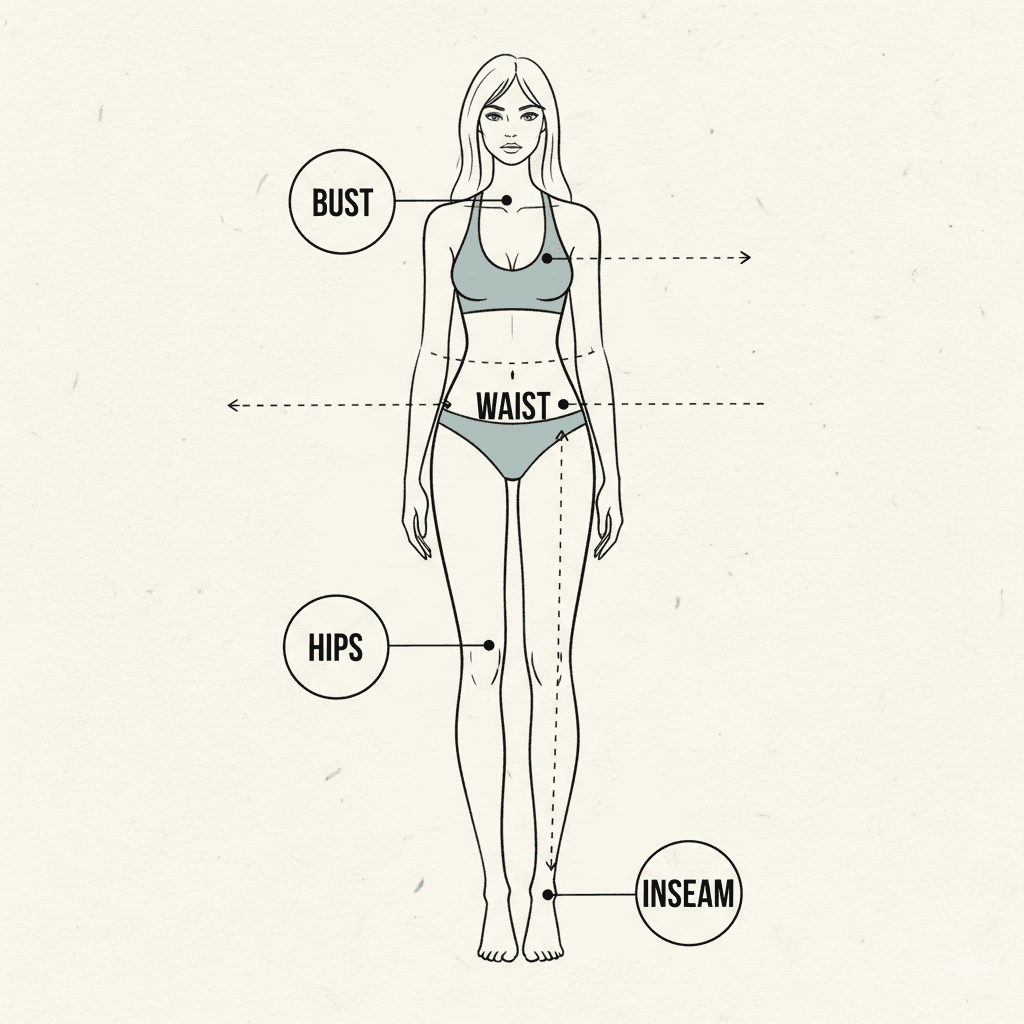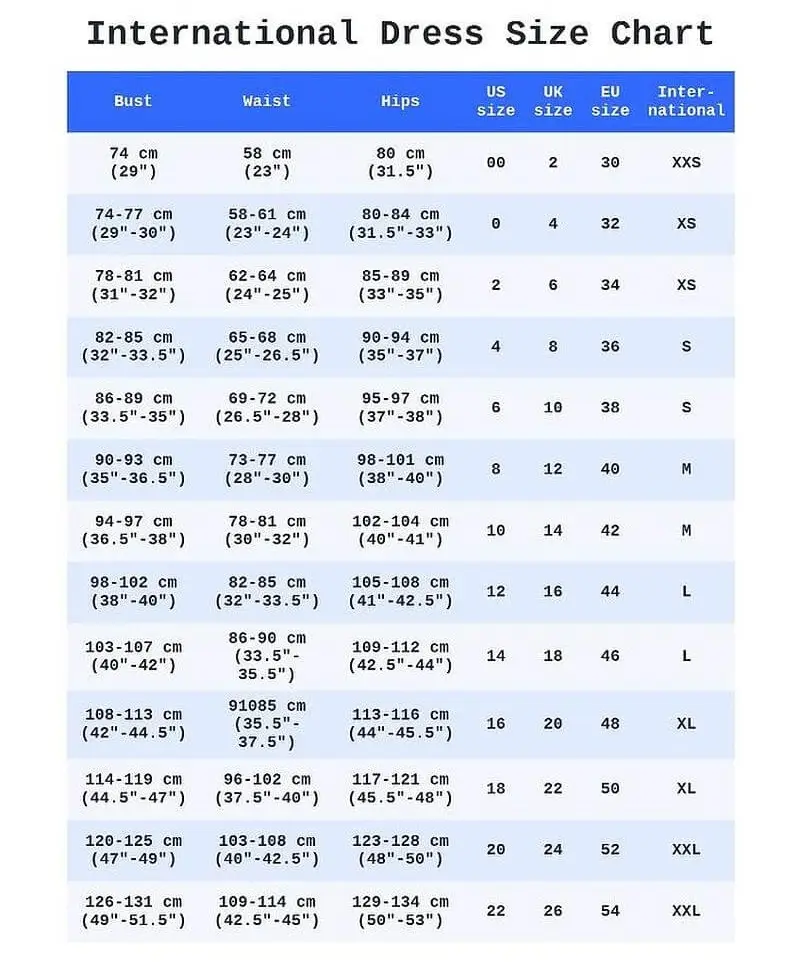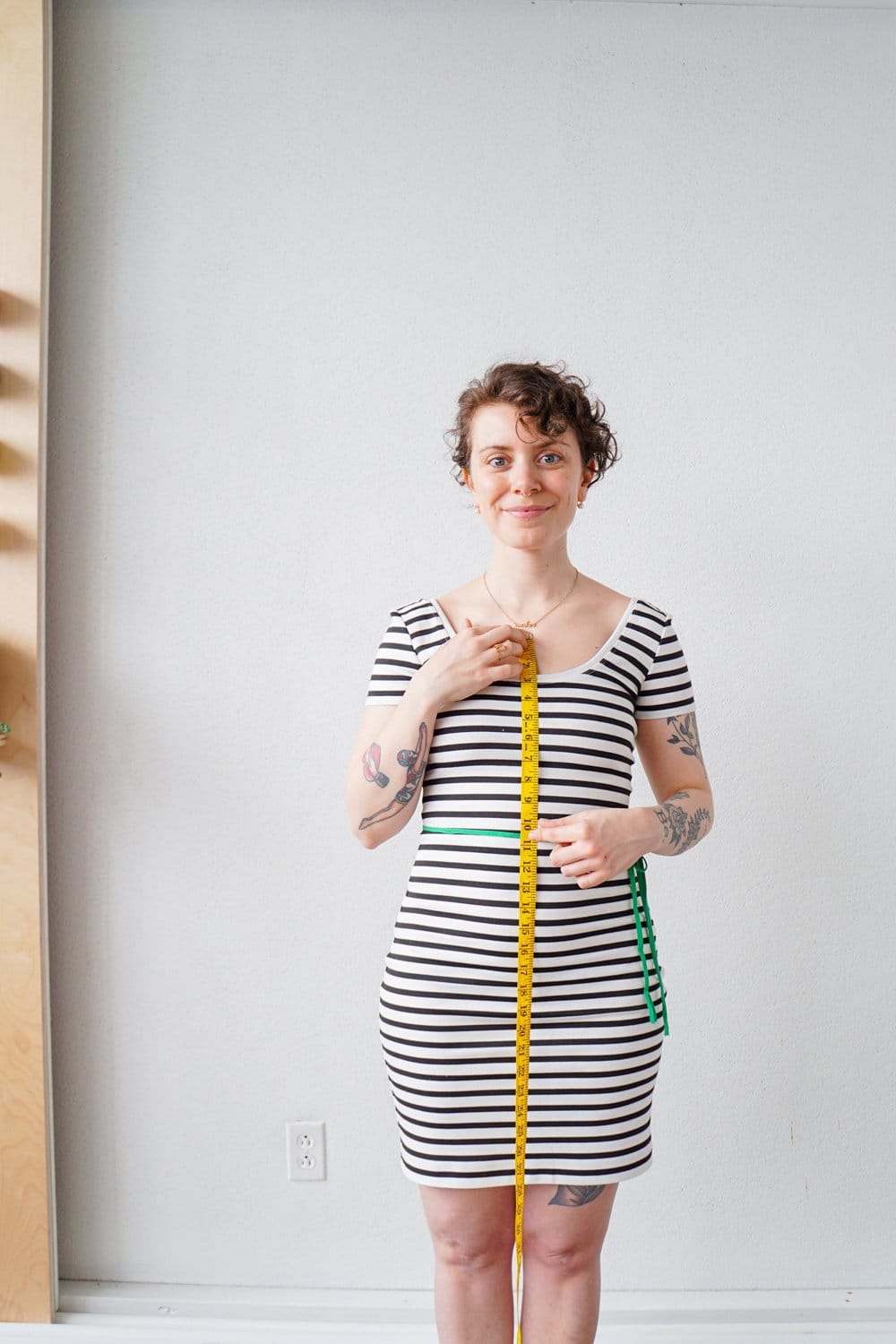Shopping for the perfect outfit should be exciting, not frustrating. But if you’ve ever found yourself confused by women’s clothing sizes, you’re not alone! From brand to brand, country to country, and even within the same store, women’s clothing sizes can be perplexing. Ever tried on a size 8 dress, only to discover it fits like a size 6? That’s because sizing standards vary, and it’s high time we tackle this confusion.
In this blog, we will break down women’s clothing sizes once and for all. No more guessing, no more frustration! By the time you finish reading, you’ll be ready to shop confidently, knowing exactly what size to choose. Let’s dive in!
Table of contents
- What Are Women’s Clothing Sizes?
- A Basic Understanding of Women’s Clothing Sizes
- Why Are Women’s Apparel Sizes So Different?
- How to Measure Yourself ?
- Women’s Clothing Sizes Across Different Regions
- Fit Over Size: Why Your Fit is More Important than the Label
- The Role of Stretchy Fabrics in Women’s Clothing Sizes
- Plus-Size Fashion: Embracing All Women’s Clothing Measurements
- Petite Sizes: Perfect Fit for Smaller Frames
- Trying Clothes On: The Best Way to Understand Women’s Clothing Sizes
- Final Tips for Shopping Women’s Clothing Measurements
What Are Women’s Clothing Sizes?
When you walk into a store or browse online, you’ll often see labels like “Small,” “Medium,” “Large,” or a number-based sizing system like 2, 4, 6, etc. These women’s clothing sizes are meant to help you select the correct fit, but here’s the catch: every brand uses its own sizing rules. So, a size 8 at one store might fit completely different than a size 8 at another. To eliminate the confusion, it’s essential to know how these women’s clothing sizes are defined.
In the U.S., a size 6 typically corresponds to a bust of 34 inches, a waist of 27 inches, and hips around 37 inches. However, in Europe, a size 36 is the equivalent of a U.S. size 6. It’s crucial to understand these numbers because they can help you make more informed decisions when shopping, both in-store and online.
A Basic Understanding of Women’s Clothing Sizes
Most clothing brands base women’s clothing sizes on three primary measurements: bust, waist, and hips. These measurements can differ across countries, brands, and even garments. A size 6 in one brand may differ greatly from the same size in another. So, how can you avoid mistakes?
Here’s a simple guide to measuring yourself for women’s clothing sizes:
- Bust: Measure around the fullest part of your bust.
- Waist: Measure the narrowest part of your waist.
- Hips: Measure around the fullest part of your hips.
With these measurements in hand, you can refer to a brand’s sizing chart to find your correct size. Remember, these numbers are just guidelines, not strict rules.
Why Are Women’s Apparel Sizes So Different?
Have you ever bought the same size clothing from two different stores and ended up with two different fits? Welcome to the world of women’s clothing sizes! Clothing brands often create their own sizing systems, and unfortunately, these don’t always align with others. This inconsistency creates confusion for shoppers.
Moreover, the women’s clothing sizes for different garments such as jeans versus dresses can vary drastically. For example, a pair of size 8 jeans may not fit the same as a size 8 dress. These differences are not always explained to the customer, leading to confusion and frustration. But don’t worry, by understanding how sizes are determined, you’ll know what to expect and make better choices when shopping.
How to Measure Yourself ?
One of the best ways to understand women’s clothing sizes is to measure yourself accurately. Here’s a step-by-step guide to help you do that:
- Bust: Measure around the fullest part of your bust, ensuring the tape measure stays level.
- Waist: Measure at the narrowest part of your waist.
- Hips: Measure around the fullest part of your hips, making sure the tape is parallel to the floor.
Once you have these numbers, refer to the sizing chart for the specific brand you’re buying from. Each brand may have slightly different sizing charts, so it’s crucial to check before you buy. Armed with your measurements, you’ll never have to second-guess your size again.

Women’s Clothing Sizes Across Different Regions
Did you know that women’s apparel sizes differ from country to country? In the U.S., a size 6 typically translates to a size 10 in the U.K. and a size 38 in Europe. If you love shopping internationally, knowing these differences can help you avoid size mishaps.
Also, some countries offer “petite” and “plus-size” options, making it even more important to understand the global size system. Familiarizing yourself with these women’s clothing sizes helps you confidently shop for international brands and ensures a better fit.

Fit Over Size: Why Your Fit is More Important than the Label
It’s tempting to focus on the number or label inside a garment, but here’s the truth: women’s clothing sizes are just numbers. They don’t reflect your body shape or how good the clothes look on you. What truly matters is how the clothing fits and feels on your body.
A size small may fit perfectly at one store but may be too tight or too loose at another. The fabric and cut of a garment play an essential role in determining fit. Therefore, instead of stressing about the number on the label, focus on how the garment feels when you wear it. After all, comfort and confidence are key!
The Role of Stretchy Fabrics in Women’s Clothing Sizes
Have you ever tried on a stretchy dress or top and felt that it fit better than a non-stretch fabric? That’s because stretchy materials, like spandex or elastane, give clothing a more flexible fit. These fabrics stretch and mold to your body, providing a more comfortable and flattering fit.
When shopping for clothes, consider both the women’s clothing sizes and the fabric composition. Fabrics with more stretch can offer a more forgiving fit, which is perfect for those who may fluctuate between sizes.
Plus-Size Fashion: Embracing All Women’s Clothing Measurements
Plus-size fashion has evolved significantly in recent years, and now more brands than ever offer trendy and stylish clothing for all body types. Women’s clothing sizes for plus-size women typically start at size 14 and go up from there. But don’t be fooled what matters is not the size number, but the fit.
Brands that offer women’s clothing sizes for plus-sized women understand the importance of providing garments that accommodate different body shapes. Whether you’re looking for a chic dress or a casual pair of pants, the goal is to make you feel great in what you wear. So, never let a size label discourage you from trying on what makes you feel your best!
Petite Sizes: Perfect Fit for Smaller Frames
Petite sizes are designed for women who are 5’4” or shorter. These garments are tailored to fit shorter torsos, sleeves, and inseams. However, sizing within the petite category can vary across brands, so it’s essential to check the size chart before purchasing.
Shopping for women’s clothing sizes in the petite section can save you the hassle of having to alter your clothes later. If you’re petite, look for brands that offer petite sizing to ensure a more flattering and comfortable fit.
Trying Clothes On: The Best Way to Understand Women’s Clothing Sizes
While online shopping is convenient, trying on clothes in-store is the best way to determine your correct size. Fitting rooms allow you to check how a garment fits, how it feels, and if it’s comfortable. Always prioritize how the clothes feel on your body over the number on the size tag.
If you’re shopping online, reading product reviews is a great way to gauge the fit of the clothing based on other customers’ experiences. This gives you a clearer idea of how the garment will fit you before you make your purchase.
Dealing with Sizing Inconsistencies: Tips for a Stress-Free Shopping Experience
Sizing inconsistencies are inevitable. A pair of size 8 jeans from one store might feel completely different than the same size from another store. So, how can you handle this?
Here are some helpful tips:
- Always check the size guide: Each brand provides a size guide to help you navigate their unique sizing system.
- Read reviews: Many customers will mention if the garment runs large or small.
- Order multiple sizes: If you’re unsure, order a few sizes and return the ones that don’t fit.
These tips will help you manage sizing inconsistencies and make your shopping experience much more enjoyable.
Final Tips for Shopping Women’s Clothing Measurements
- Know your measurements: Bust, waist, and hip measurements are key to understanding women’s clothing sizes.
- Size labels mean little: Don’t get too caught up in the size. Focus on the fit and feel instead.
- Prioritize fit and comfort: Select clothes that fit your body and make you feel comfortable.
- Be patient: Take your time when shopping. Sizing inconsistencies happen, but with patience, you’ll find the perfect fit.
- Look for inclusive sizing: Many brands now offer a wide range of sizes, from petite to plus-size.
Conclusion: Women’s Clothing Sizes Made Simple
Understanding women’s clothing sizes doesn’t have to be complicated. By taking accurate measurements, referring to size guides, and focusing on fit over the label, you can make confident clothing choices. No more guessing games, no more frustration just great fits every time.
Clothes are meant to enhance your body, not constrain it. With the right knowledge of women’s clothing sizes, you can confidently shop and find clothing that looks and feels amazing. So, let go of the guesswork, and let your shopping experience be fun, easy, and stress-free!
FAQs
1. Why are women’s clothing sizes so different across brands?
Women’s clothing sizes vary because different brands use their own sizing charts and standards, which can lead to inconsistencies in fit. It’s always a good idea to refer to each brand’s specific size guide for the most accurate fit.
2. How can I measure myself for women’s clothing sizes?
To measure yourself for women’s clothing sizes, measure around the fullest part of your bust, the narrowest part of your waist, and the fullest part of your hips. Use these measurements to refer to the brand’s sizing chart for the most accurate fit.
3. What’s the best way to handle sizing inconsistencies when shopping?
To handle sizing inconsistencies, always check the brand’s size guide, read customer reviews for fit recommendations, and consider ordering multiple sizes to return what doesn’t fit.


